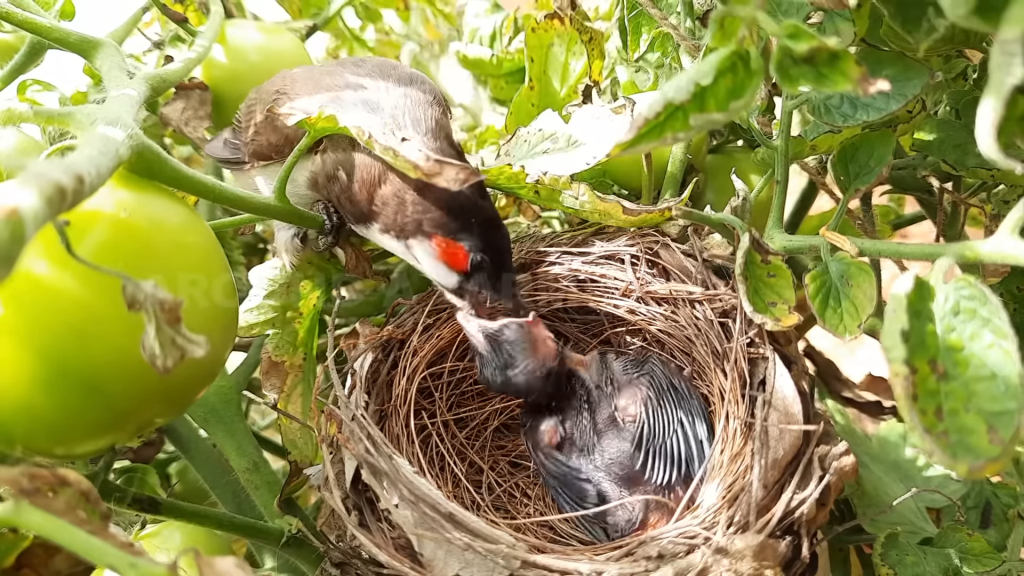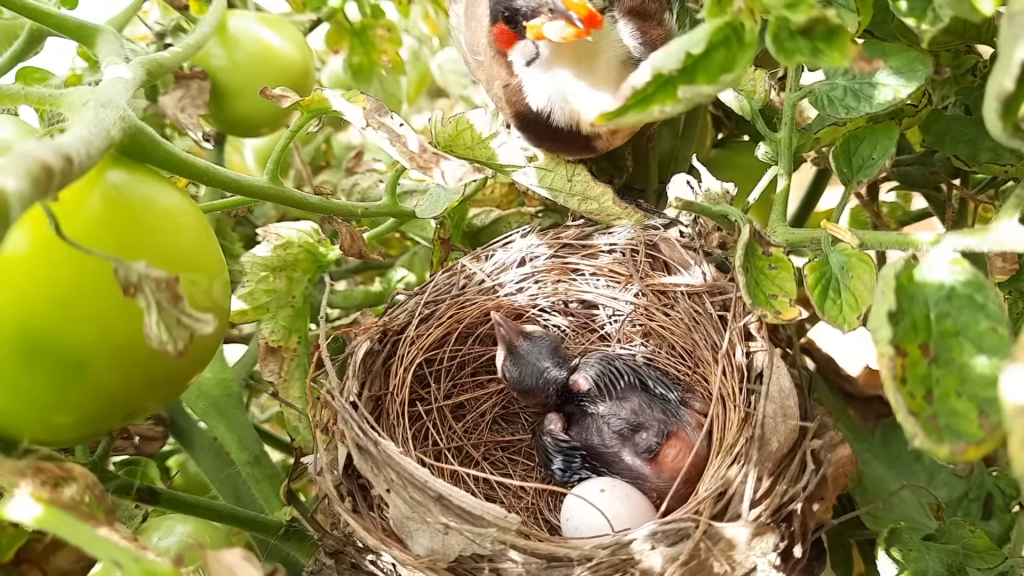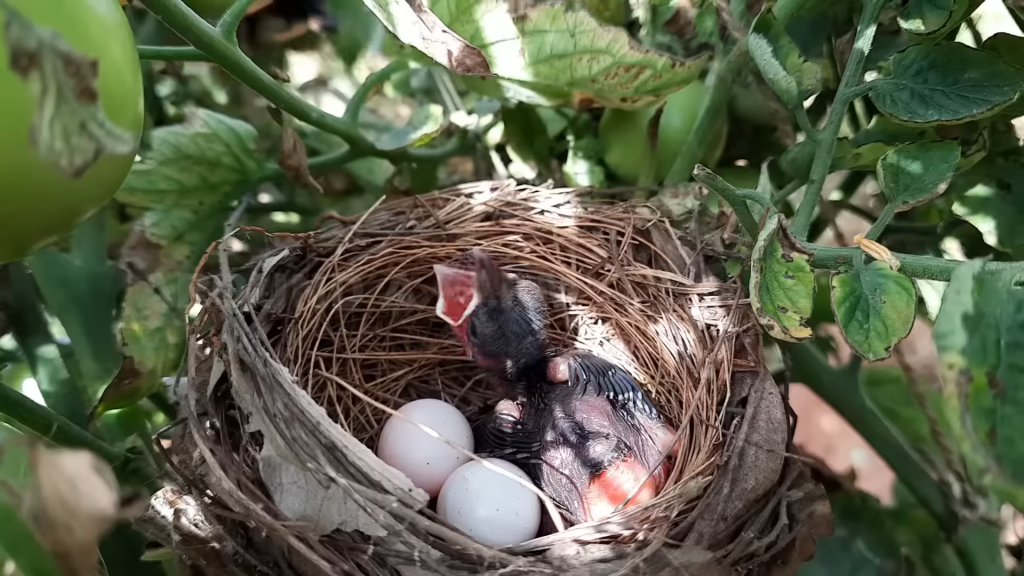Category: Uncategorized
-
Adorable dog reacts in the cutest way to Lion King’s saddest scene
The Lion King is many people’s favorite Disney movie, and it seems like it’s Luna’s favorite, too.
The clever four-month-old pup was transfixed by the emotional scene in which Simba reacts to the death of his father, Mufasa. Luna seemed to fully understand what was happening on screen, whimpering in response and lying down at the same time as Simba lay next to his father.
Owner Josh Myers said, “To see her crying at the TV was the sweetest thing I think I’ve ever seen.”
Sun Subscribers receive the latest breaking news and videos direct to their feed. SUBSCRIBE NOW and hit the bell to be the first in the know.
The Sun delivers breaking news, latest gossip and incredible exclusives around the world with hubs in London, New York, Scotland and Ireland.
Covering topics from news, money and sport along with our famous Fabulous Magazine, The Sun is the biggest news brand in the UK and one of the fastest growing news sites in the US.
-
Helping hand to poor Elephant starving for three days in an abandoned well
Today is another rescue mission day. The officers are moving deep into the forest. It is an agricultural land beneath the forest. We can see an Elephant is fallen into a well. These kinds of wells are constructed within the lands to support agricultural activities. According to the report, the Elephant has been here for about three days.
Since this is not a very crowded area ,it might have taken a longer time for people to see him. The poor creature cannot come out due to the concrete walls. His strength must have wanned since he is starving for days.

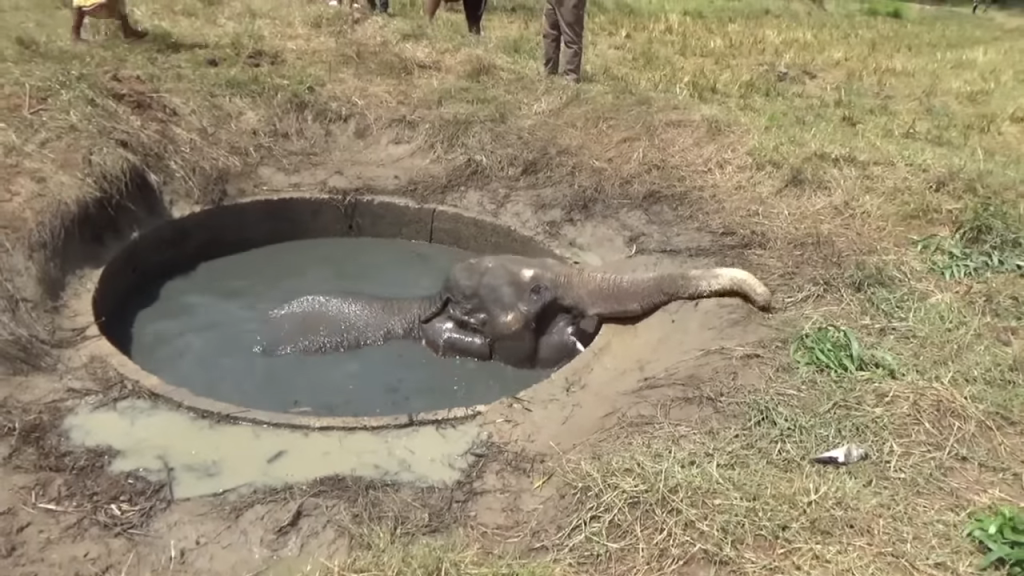
Rescuing the animal will be also much harder for the wildlife conservation officers. If you have seen our previous rescue videos, the Elephants are usually rescued by using an excavator and the wells are mud wells that are dug inside the land. But here, the scenario is different as the well is adequately fenced with a concrete wall. Lets’ see how this mission goes.
As you can see, the well is exactly the size of the Elephant. Using an excavator will be easy, but it might cause injuries for the animal. The walls of the well are slippery due to its concrete walls. If the walls are mud walls, the Elephant might get out by making the necessary friction by his leg. Here we can see the people have put a tree stem to the back of the well. This is basically to support the Elephant to climb up. The officers attempt to break the concrete wall so that the Elephant can come out.
We can see that the Elephant is not moving or trying to come out. This is because he is too tired and does not have enough energy to climb up. The officers and the villagers try to push him with the bark but he doesn’t move. The well mouth is widened with small tools too at the same time. Since any of these strategies are not working, we can see that the people will get the help of a larger rope. It is not that clear what they are going to do with the rope but let’s see.
The officers tie the ropes to a vehicle tire and put it inside the well like a floating device. The people are trying everything they can do to rescue this animal’s life, and this really should be appreciated. Take a close look to the well. The whole concrete wall is broken down and the well is widened a bit.
Since any of these didn’t work, the people has called for an excavator. The well is too small to excavate and it really has a significant effect for the life of the animal. But let’s see how it goes. They started to dig an inclined path from the excavator to make a road for the Elephant to walk out safely.

-
How To Grow Dahlia: A Comprehensive Guide
Growing dahlias can be an immensely rewarding experience, transforming your garden into a vibrant spectacle of colors and shapes. Known for their breathtaking blooms, dahlias are not just another flower; they embody the artistry of nature. By understanding their unique needs and care requirements, you can cultivate these stunning flowers with confidence and creativity.
Striking orange and black Dahlia flowers in a garden
A captivating display of orange and black Dahlia flowers, featuring a unique and striking petal formation, perfect for adding a dramatic flair to any garden.
Prepping Your Garden
Choosing the Right Location
Dahlias thrive in full sunlight, requiring at least 6-8 hours of direct sun each day. Imagine your garden as a canvas where sunlight is the paint, and dahlias are your masterpiece. Selecting a sunny spot enhances their blooming potential, allowing their colors to explode vibrantly throughout the summer.
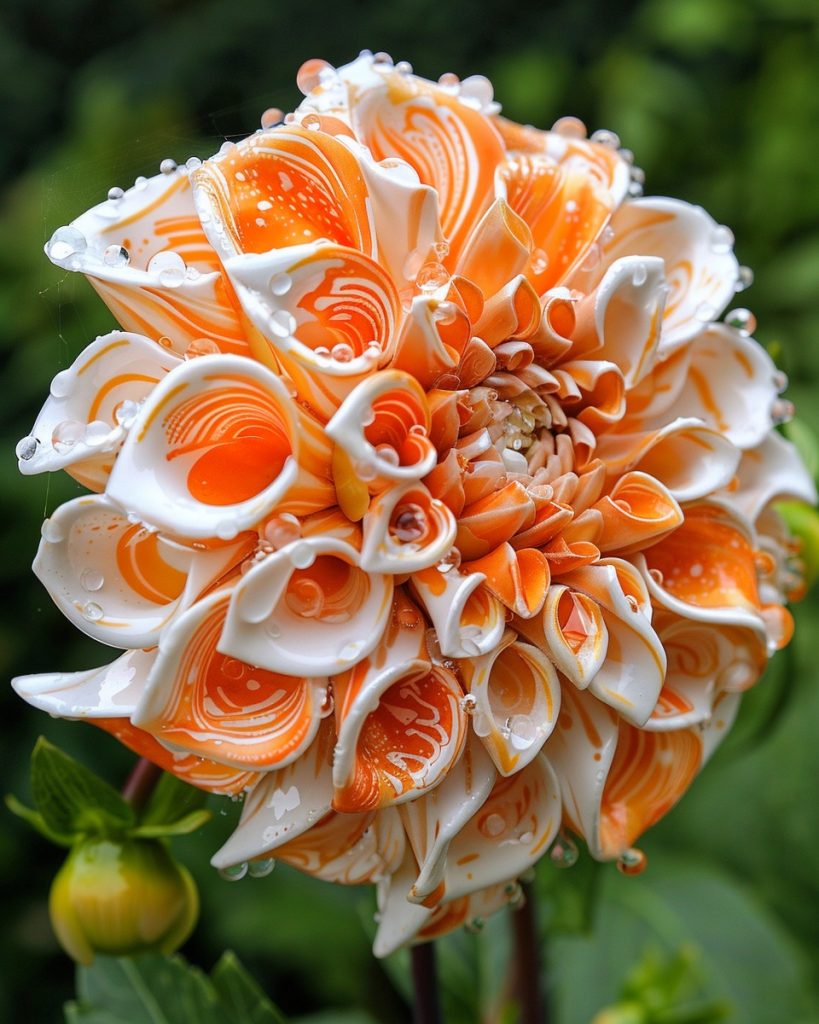
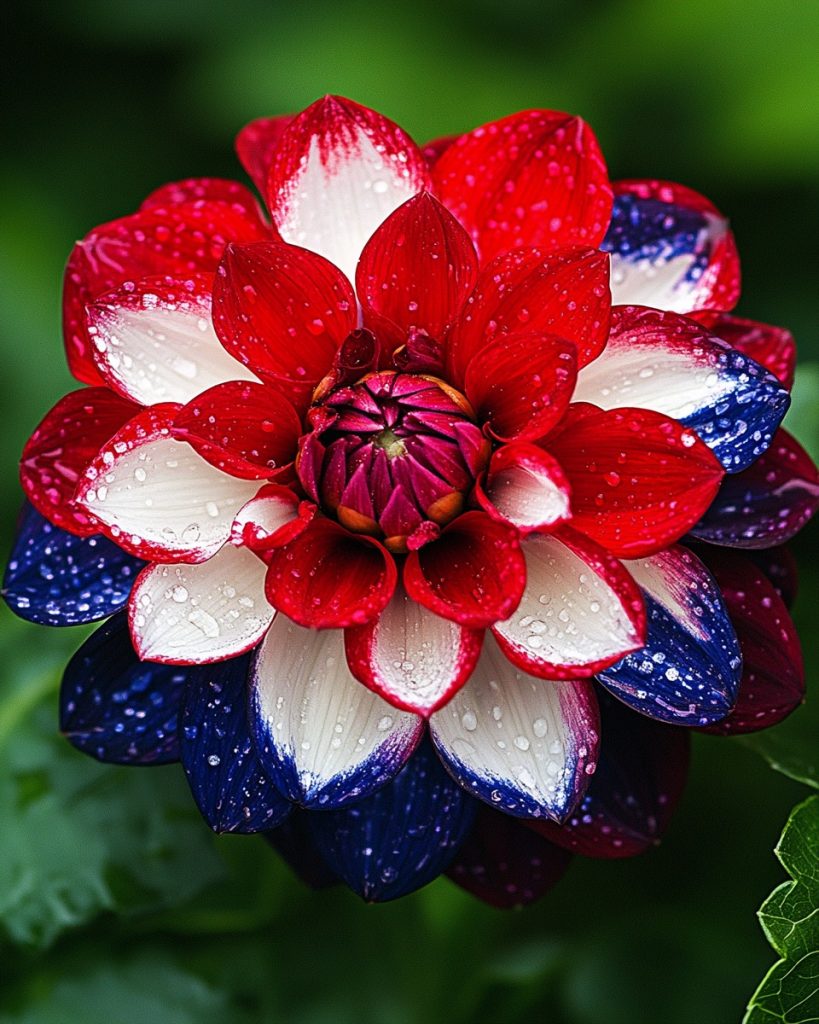
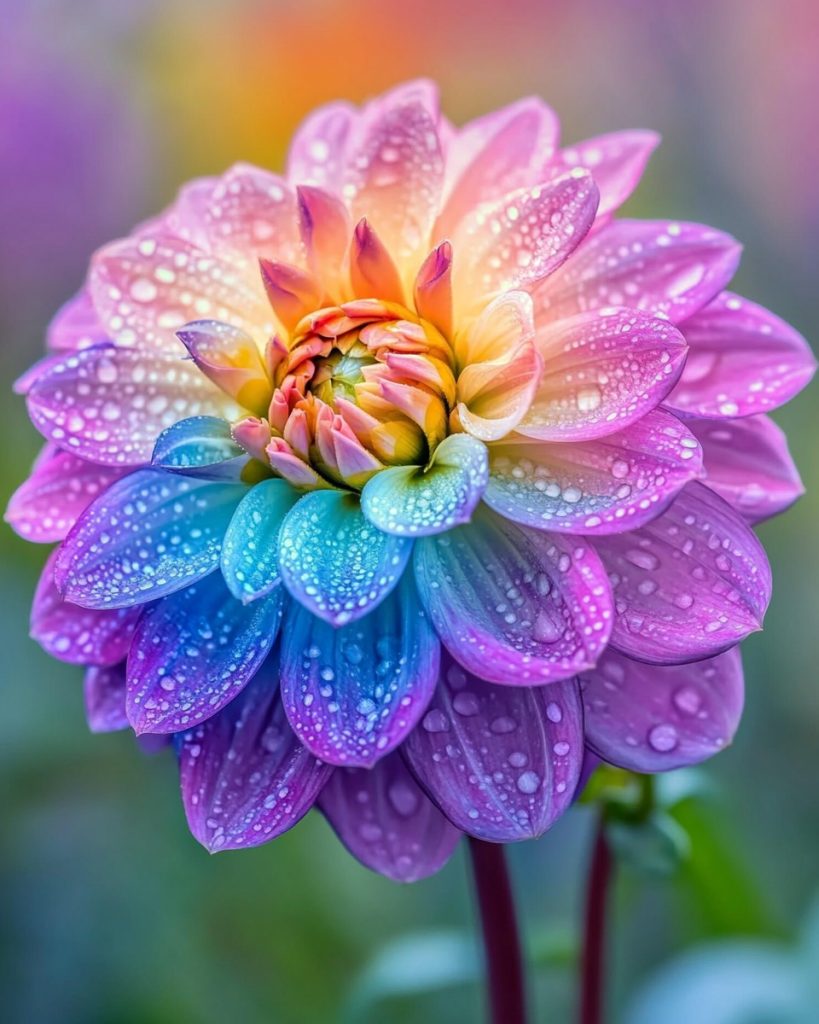
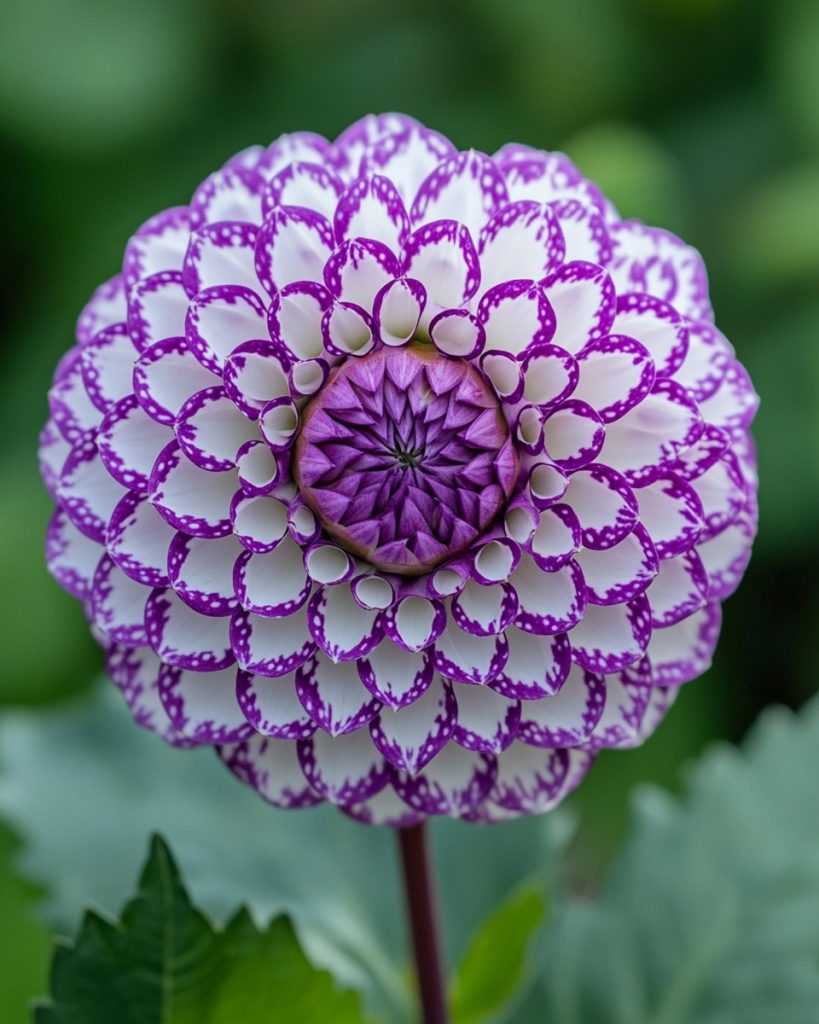
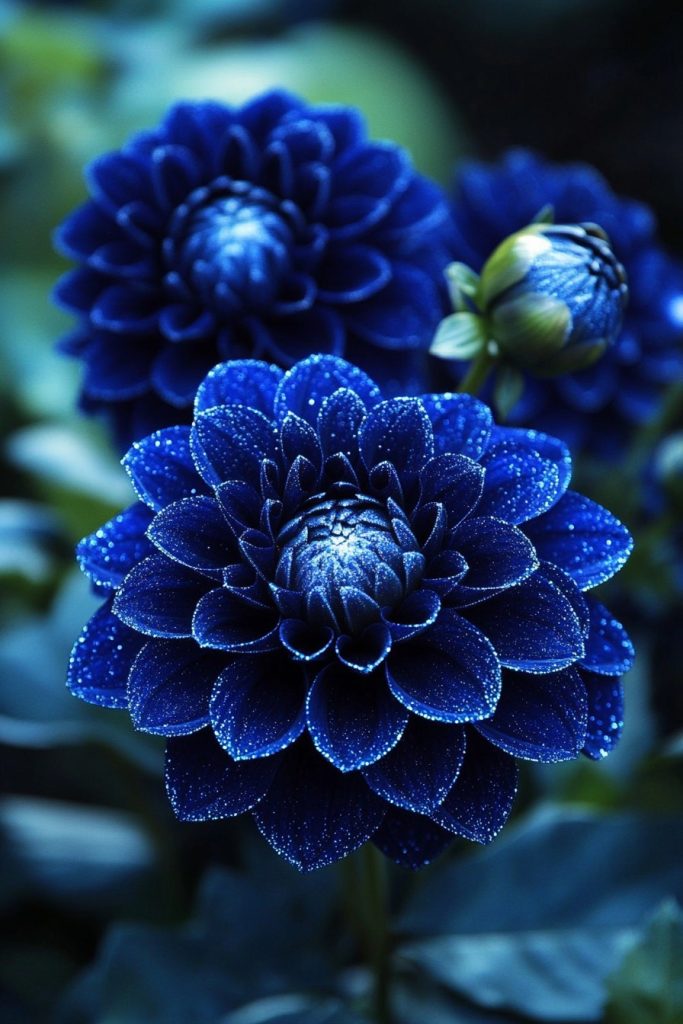
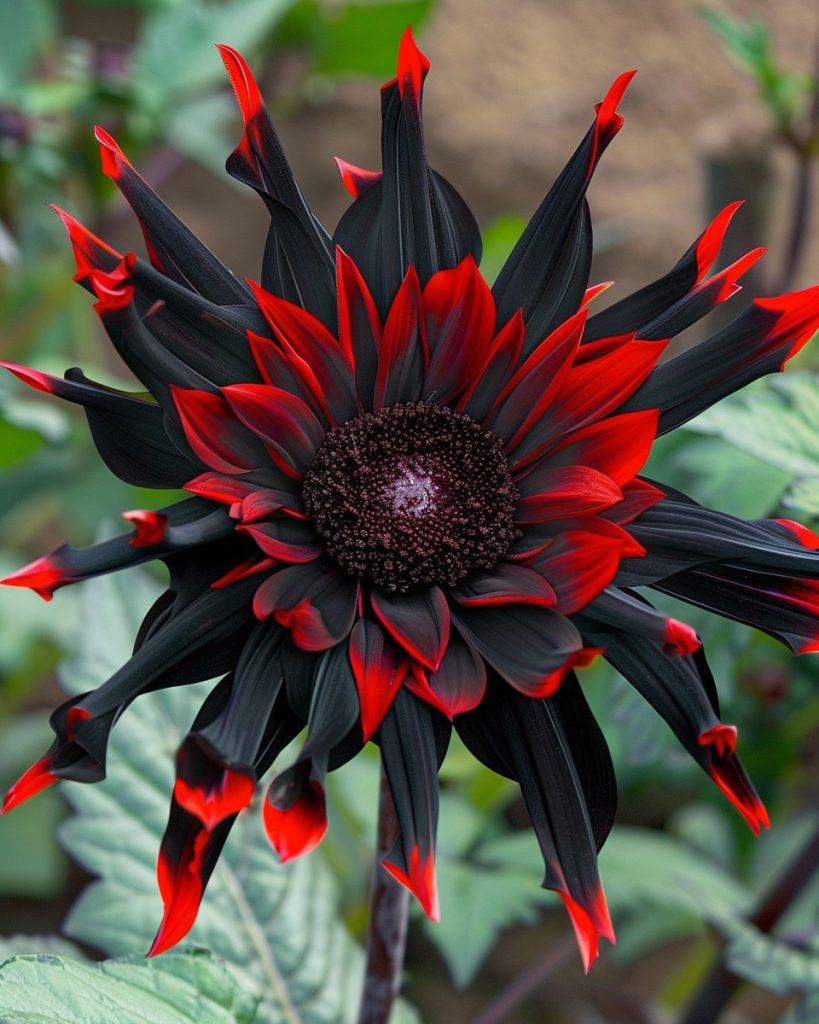
Orange and white Dahlia flower with swirling petal patterns and dew drops
A captivating Dahlia flower with unique swirling orange and white petal patterns, adorned with dew drops, adding a fresh and artistic touch to any garden.
In addition to light, dahlias prefer well-drained soil. Consider it a luxury spa treatment for your plants—good drainage prevents waterlogging, which could lead to rot and other diseases. If your soil isn’t naturally draining, think about building raised beds or using pots to allow the tubers to breathe and flourish.Red, white, and blue Dahlia flower with dew drops
A stunning Dahlia flower featuring vibrant red, white, and blue petals, adorned with dew drops, creating a captivating and patriotic display.
Planting Techniques
Timing and Temperature
Timing is crucial when planting dahlias. They detest cold soil, so plant them only when the temperature reaches at least 60ºF (15°C) and all risk of frost has passed. This consideration is akin to waiting for the perfect moment to unveil a work of art; patience pays off in beauty.Multi-colored Dahlia flower with dew drops
A mesmerizing Dahlia flower displaying a stunning gradient of rainbow colors on its petals, adorned with dew drops, adding a magical touch to any garden.
Starting Indoors vs. Outdoors
If you live in a cooler climate, consider starting your dahlias indoors 4-6 weeks before the last frost date. When transplanting outdoors, position the tubers on their sides with stems pointing upwards, covering them lightly with soil. This method gives your plants a head start and allows for a more robust root system once they’re out in the garden.Purple and white patterned Dahlia flower
A stunning Dahlia flower with an intricate pattern of purple and white petals, creating a captivating geometric design that adds elegance to any garden.
Watering Wisely
Drip Irrigation: The Ideal Method
Watering is much like nurturing a friendship: it requires consistency and attention. Dahlias need a steady supply of moisture, preferably from a drip irrigation system that delivers water directly to the roots while keeping foliage dry. This approach minimizes disease risk while ensuring your plants receive their hydration without stress.Consider the rhythm of watering as part of their life cycle. If you were a dahlia, would you prefer a torrential downpour or a gentle stream? Consistency helps these flowers bloom beautifully.
Deep blue Dahlia flowers with a sparkling effect
A mesmerizing display of deep blue Dahlia flowers with a sparkling sheen, perfect for adding a touch of mystery and elegance to any garden.
Care and Maintenance
Fertilization and Pests
Just as artists require the right tools, dahlias benefit from proper nutrition. Use a balanced fertilizer to support growth during the blooming phase, and watch for pests that may threaten your garden masterpiece. Regular checks and immediate action against aphids or beetles will keep your dahlias healthy and spectacular.Black and red Dahlia flower with sharp, pointed petals
A captivating Dahlia flower featuring bold black and red petals, creating a dramatic and eye-catching display perfect for adding intensity to any garden.
Enjoying the Blooms
Once your dahlias are established, they’ll reward you with a dazzling array of colors, shapes, and sizes, making every corner of your garden sing. Picture hosting garden parties where guests marvel at your creations, or bringing fresh-cut dahlias into your home to brighten up a room. The beauty of dahlias is not just in their aesthetics but in the joy they bring to those who cultivate them. -
Amazing Male Seahorse Giving Birth To Thousands Of Babies Underwater
The Fascinating Life Cycle of Seahorses: A Look at Male Pregnancy
When we think of giving birth in the animal kingdom, the typical images that come to mind involve female mammals or reptiles. However, one of the most extraordinary phenomena in nature takes place among the enchanting seahorses. In a captivating twist on the typical reproductive process, these unique marine creatures defy convention by showcasing male pregnancy, making their birth story one of the most unusual and fascinating in the world.The Unique Reproductive System of Seahorses
Seahorses, belonging to the family Syngnathidae, exhibit a singular approach to reproduction. Unlike most other fish, it is the male seahorse that becomes pregnant. The female seahorse transfers her eggs to the male’s specialized brood pouch, a unique anatomical feature located on his abdomen. This pouch is a secure environment that provides oxygen, nutrition, and protection for the developing embryos.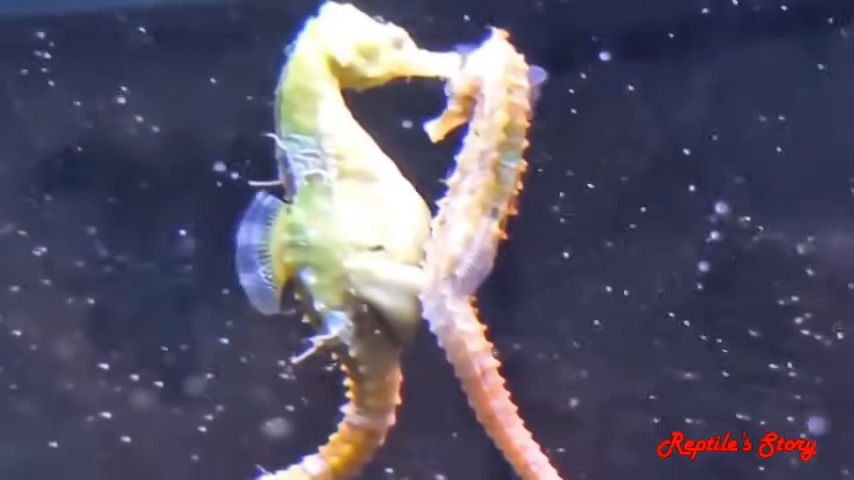
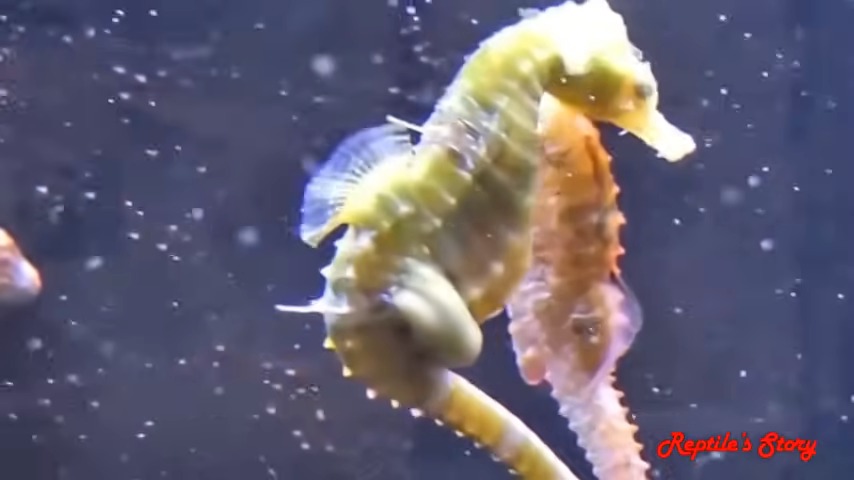
Courtship and Mating Rituals
The mating process of seahorses is both elaborate and captivating. During the courtship phase, seahorses engage in intricate dances, often entwining their tails and swimming side by side. This bonding process can last several days and is thought to strengthen their connection before reproduction. The female seahorse then deposits her eggs into the male’s pouch, where fertilization occurs internally.Gestation: The Male’s Journey to Parenthood
Once the eggs are nestled in the male’s pouch, gestation begins. The duration of this process can vary based on species, water temperature, and environmental conditions, typically ranging from 10 days to several weeks. During this time, the male seahorse undergoes remarkable physiological changes. He releases hormones that control the development of the embryos, supplying them with nutrients and oxygen through a placenta-like structure within the pouch.As the embryos develop, the male seahorse’s pouch expands, accommodating the growing young. It is during this gestational period that the male also becomes increasingly protective, ensuring that the pouch remains safe from predators.
The Birth Process
When the young seahorses are ready to be born, the male undergoes a dramatic birthing process. The contraction of muscles around the pouch helps to expel the fully formed, miniature seahorses into the water. Depending on the species, a single birth can result in anywhere from a few dozen to more than a thousand tiny seahorses being released at once. This remarkable birthing process is akin to labor in mammals, showcasing the intensity and significance of this event in the life cycle of seahorses.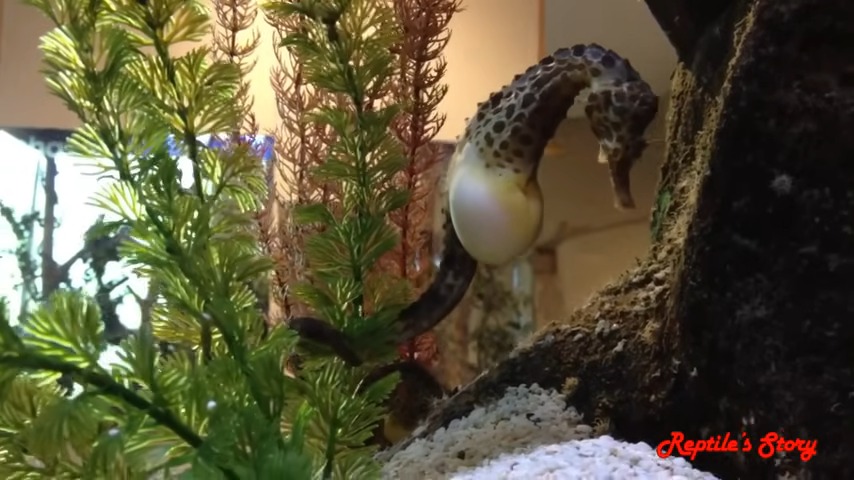
-
How they managed to do it? Certainly they are most intelligent birds
In a surprising twist of nature, a recent incident has showcased the profound interconnectedness of the animal kingdom and the environment, highlighting a remarkable event where a bird played an unexpected role in combating a fire. This inspiring tale not only underscores the adaptability of wildlife but also serves as a reminder of the precarious balance of our ecosystems and the innovative ways nature finds to confront challenges.
The Incident Unfolds
The event occurred in a region plagued by wildfires, where flames engulfed vast stretches of forest, threatening wildlife, property, and air quality. Amidst the chaos, residents and first responders fought fervently to control the blaze, deploying helicopters and fire engines in a race against time. It was during this frantic battle that witnesses spotted a small bird—a local woodpecker—engaged in a seemingly peculiar behavior.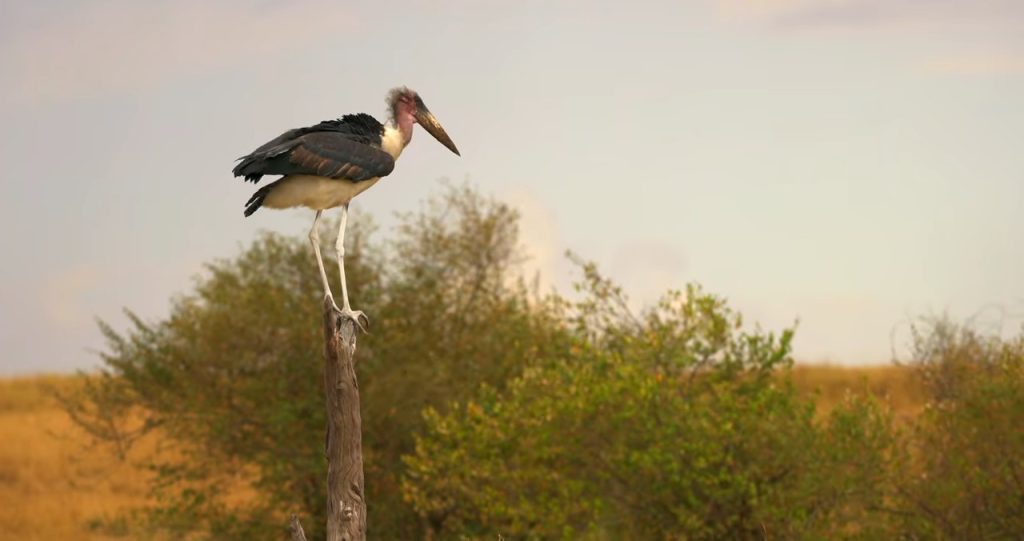
Rather than flee the flames, the bird was seen repeatedly flying between a nearby water source and the burning trees, dropping water onto the flames in a desperate attempt to quench the fire. Although the amount of water each bird could carry was minuscule, the act itself was a profound testament to the instinctual behaviors animals exhibit in times of crisis.
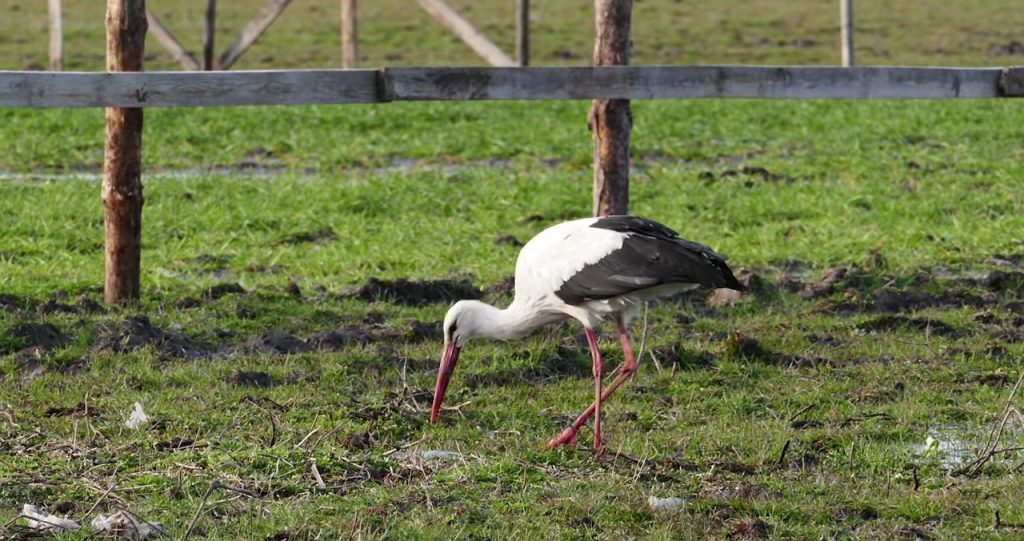
Nature’s Resilience
This bird’s actions sparked interest and admiration for wildlife, illustrating nature’s resilience in the face of disasters. It drew attention to the behaviors of many species that, though often overlooked, demonstrate remarkable instincts for survival and protection of their habitat. Birds have long been known for their aerial skill and navigation, but their ability to adapt to dynamic environments can often reveal themselves in unexpected ways, such as through this woodpecker’s remarkable instinct to fight against the flames threatening its home.Experts believe that this type of behavior, while rare, can signify the instinctual drive within many animals to protect their nesting grounds and food sources. Many species are more in tune with their environments than we often realize, contributing to the balance of the ecosystem by creating habitats, dispersing seeds, and yes, even fighting fires.
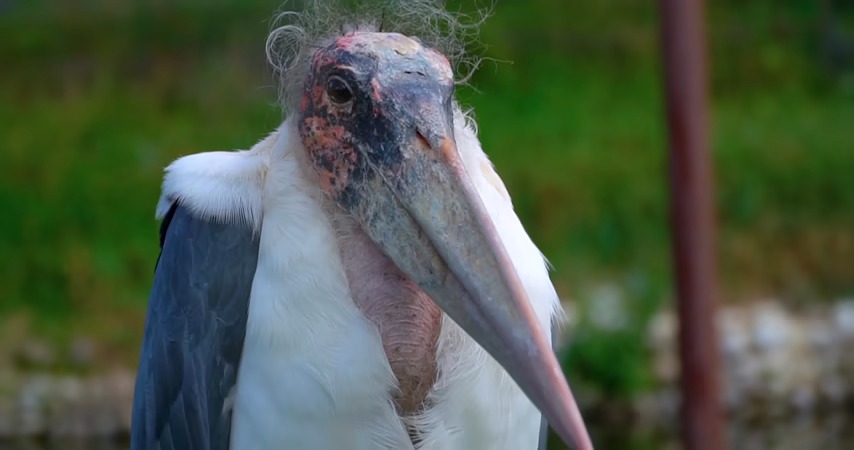
-
Maximize Your Garden’s Appeal with Shade-Loving Hosta Plants: A Comprehensive Care Guide
Hosta ‘Blue Waves’
An extraordinary display of oversized, rippled blue leaves, each leaf glistening with water droplets, creating a mesmerizing effect in your garden.Plant care guide:
Light: Partial to full shade.
Water: Keep the soil consistently moist but well-drained.
Soil: Rich, well-draining soil with plenty of organic matter.
Temp: 55-80°F (13-27°C).
Humidity: Moderate to high.Organic fertilizers:
Fertilize once a month during the growing season with a balanced, slow-release fertilizer.Garden decoration ideas:
Ideal for creating a focal point in shaded garden corners or as a striking feature plant in large containers.Blue and White Hosta Plants
Blue and White Hosta Plants
Hosta ‘Giant Blue’
A magnificent showcase of enormous, deep blue leaves with delicate white splashes, making a bold statement in any garden. The size and color of the leaves create a striking visual effect that captivates attention.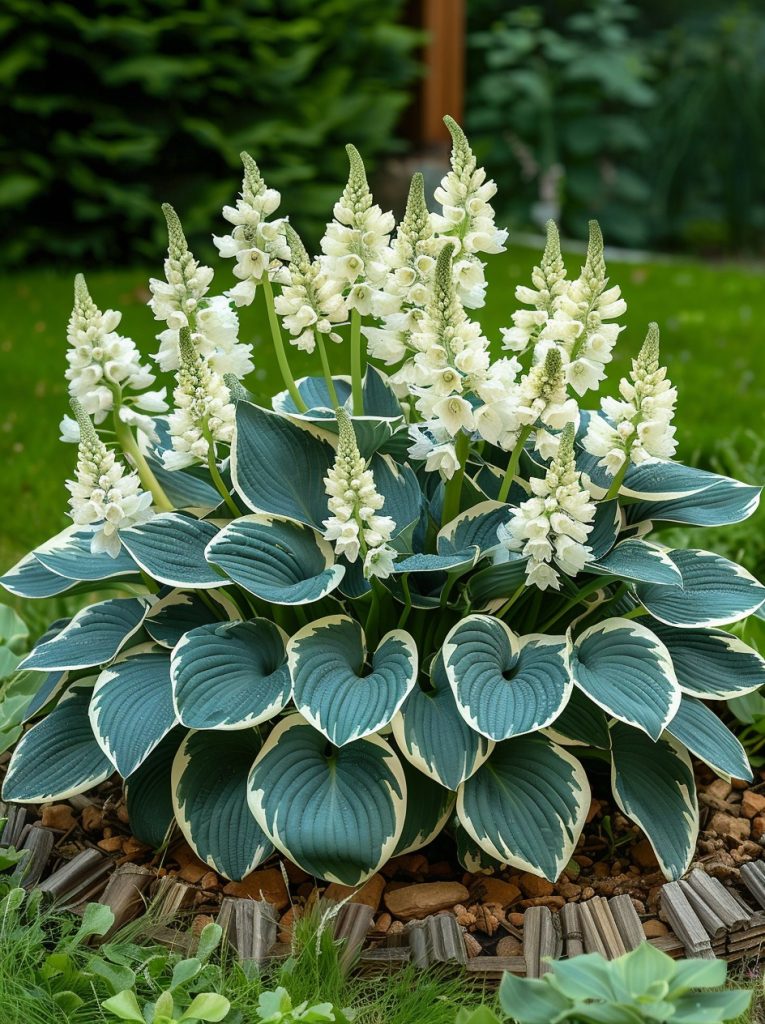
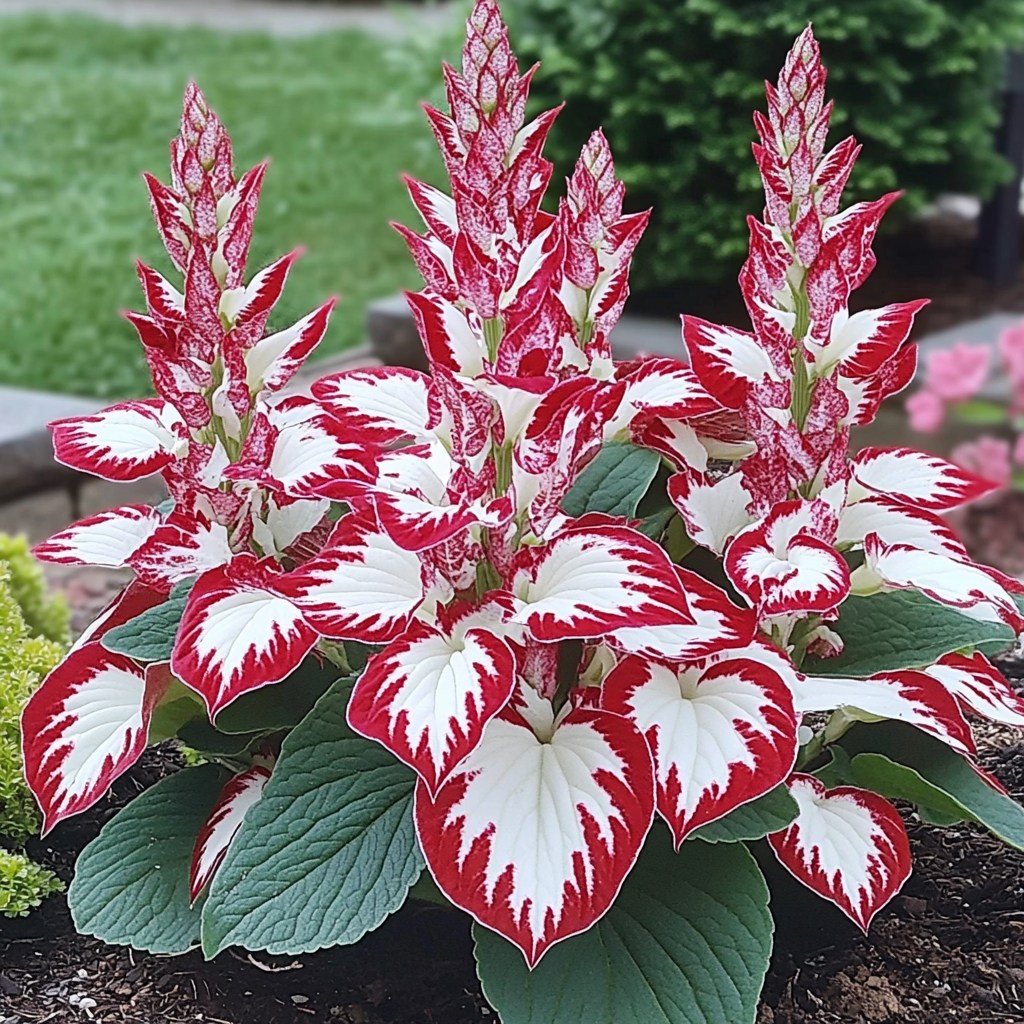

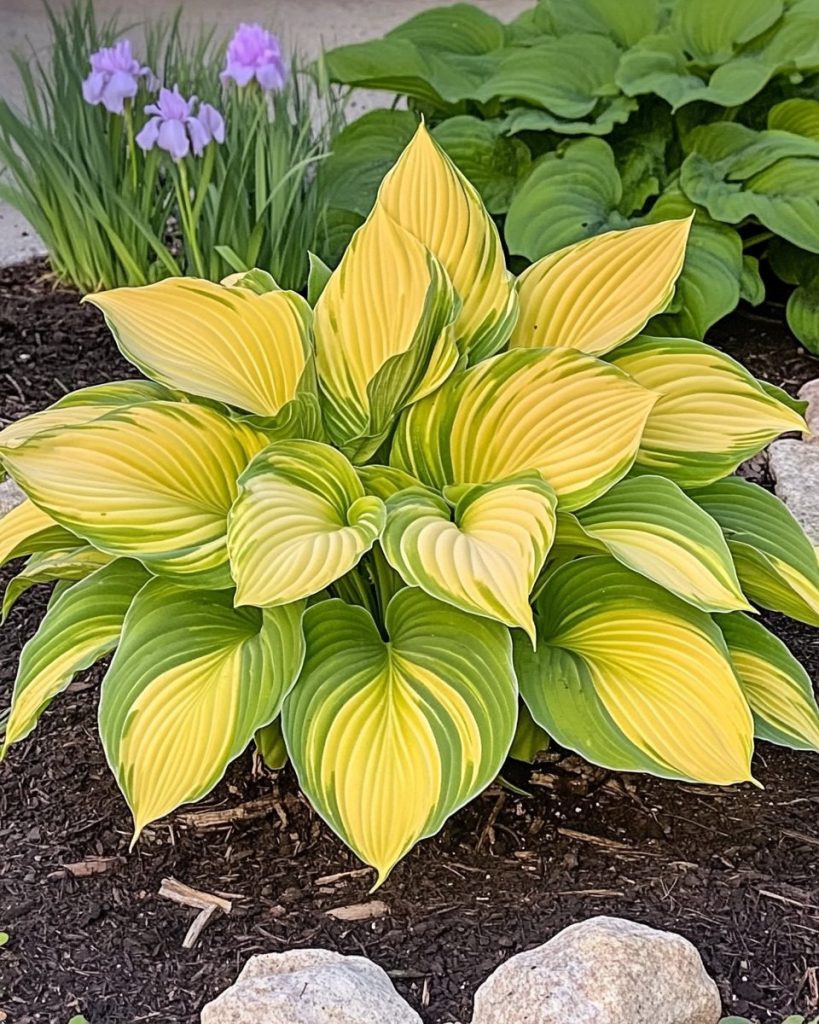
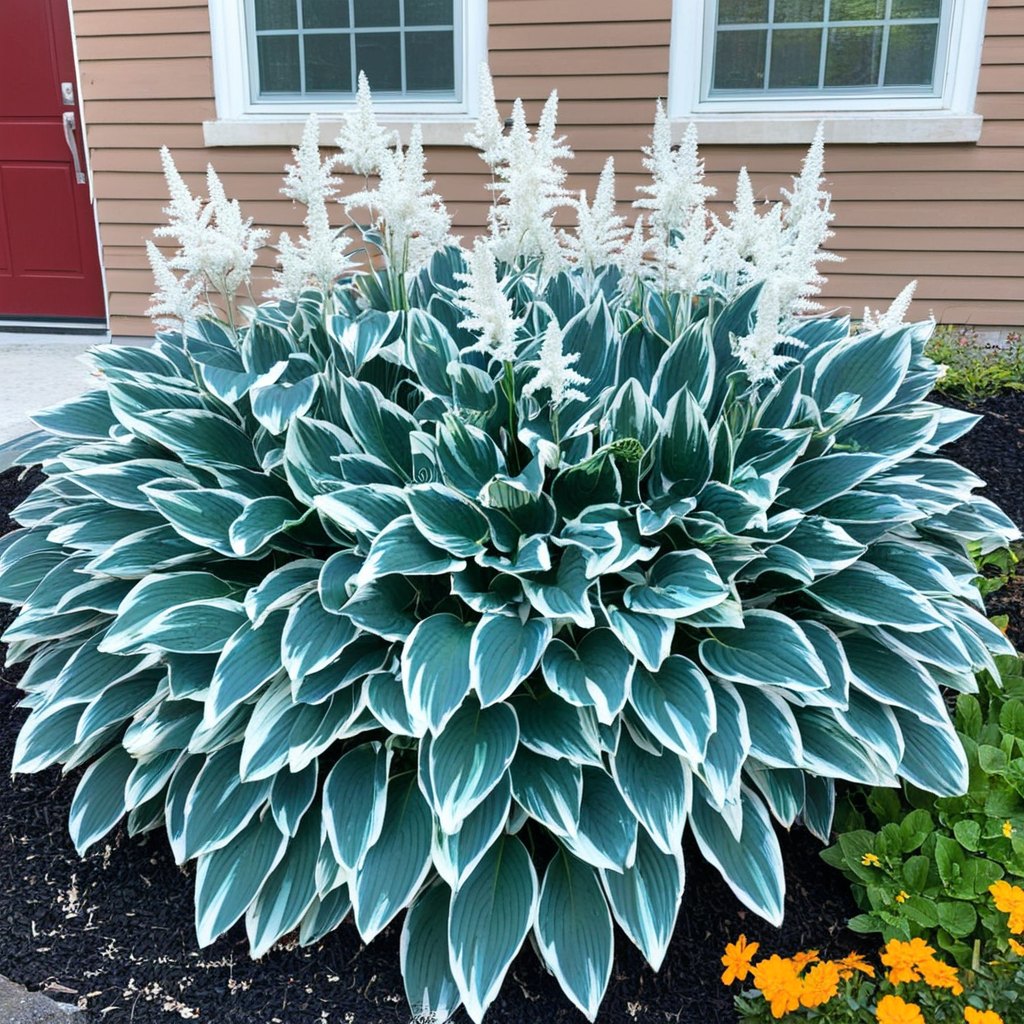
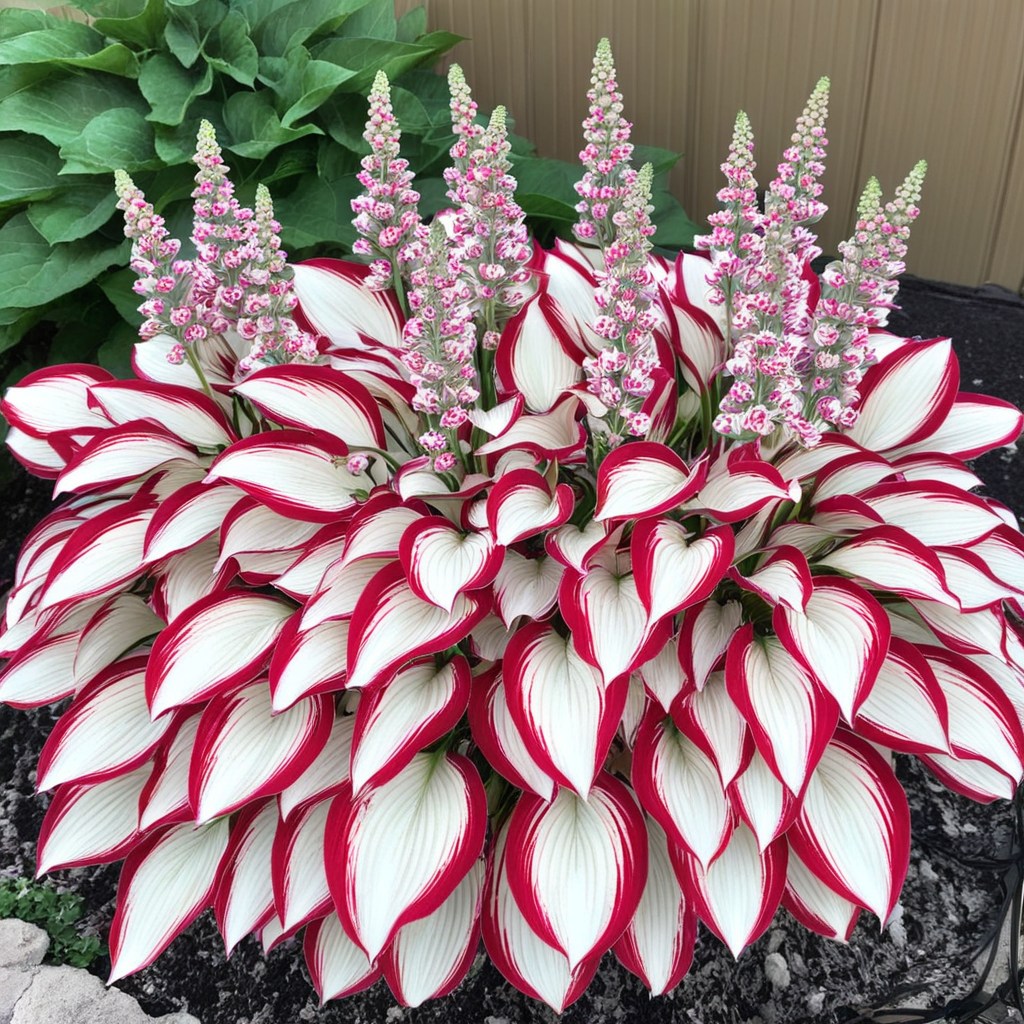
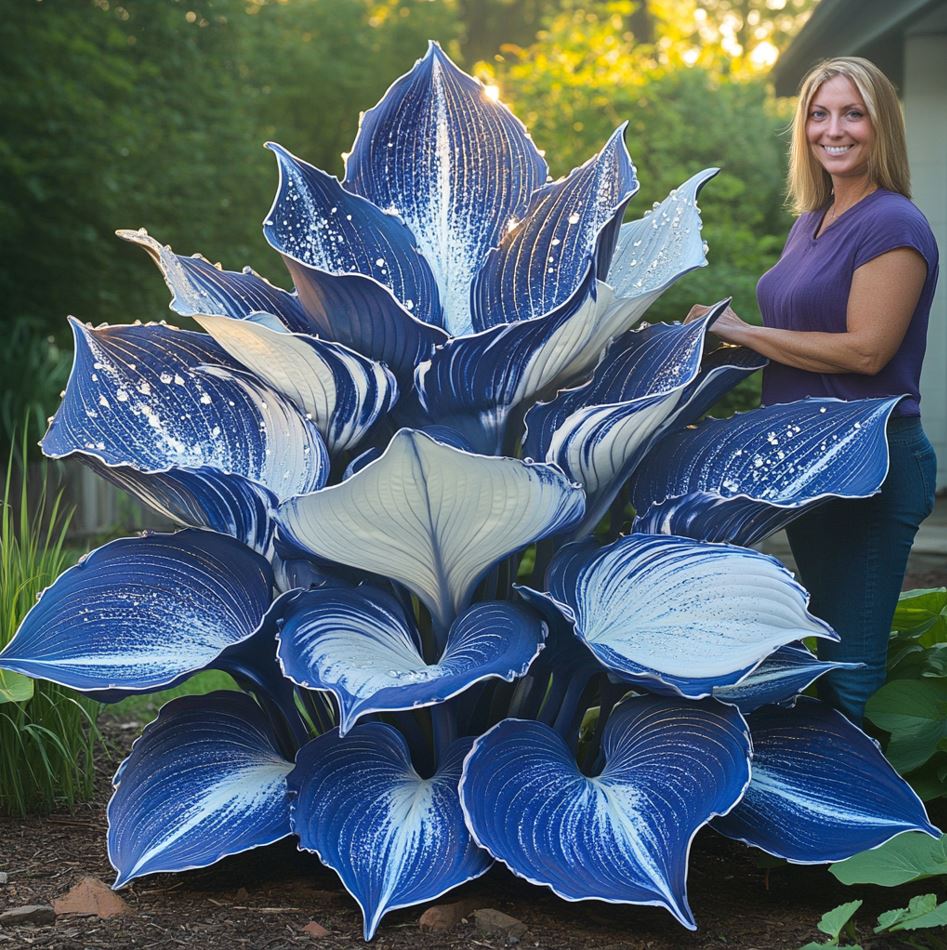
Plant care guide:
Light: Partial to full shade.
Water: Keep the soil consistently moist.
Soil: Well-draining, rich in organic matter.
Temp: 60-75°F (16-24°C).
Humidity: Moderate.Organic fertilizers:
Apply a slow-release fertilizer in the spring to promote vigorous growth.Garden decoration ideas:
Ideal as a focal point in a shaded garden bed, or along pathways where its dramatic size can be appreciated.Red and White Hosta (Hosta spp.)
Red and White Hosta (Hosta spp.)
Red and White Hosta (Hosta spp.)
A vibrant display of red and white variegated leaves, highlighted by tall pink flower spikes, creating a striking contrast in any garden setting.Plant care guide:
Light: Partial to full shade.
Water: Keep the soil consistently moist but not soggy.
Soil: Rich, well-draining soil.
Temp: 60-75°F (16-24°C).
Humidity: Moderate.Organic fertilizers:
Fertilize in early spring with a balanced, slow-release fertilizer.Garden decoration ideas:
Perfect for adding bold color to shaded garden beds or as a striking container plant.Blue and White Hosta (Hosta spp.)
Blue and White Hosta (Hosta spp.)
Blue and White Hosta (Hosta spp.)
A stunning mound of blue and white variegated leaves with tall white flower spikes, perfect for adding elegance to your garden.Plant care guide:
Light: Partial to full shade.
Water: Keep the soil evenly moist, but not waterlogged.
Soil: Rich, well-draining soil.
Temp: 60-75°F (16-24°C).
Humidity: Moderate.Organic fertilizers:
Apply a balanced, slow-release fertilizer in early spring.Garden decoration ideas:
Ideal for creating a lush, textured backdrop in shaded garden areas.Golden Hosta (Hosta spp.)
Golden Hosta (Hosta spp.)
Golden Hosta (Hosta spp.)
This beautiful Hosta variety features bright golden-yellow leaves with green edges, adding a burst of color to shaded areas.Plant care guide:
Light: Partial to full shade.
Water: Keep the soil consistently moist, avoiding waterlogging.
Soil: Rich, well-draining soil.
Temp: 60-75°F (16-24°C).
Humidity: Moderate.Organic fertilizers:
Fertilize in early spring with a slow-release, balanced fertilizer.Garden decoration ideas:
Ideal for brightening up dark corners of the garden or as a contrast plant in mixed borders.Giant Blue Hosta (Hosta spp.)
Giant Blue Hosta (Hosta spp.)
Giant Blue Hosta (Hosta spp.)
A breathtaking Hosta variety with enormous, heart-shaped blue leaves, creating a dramatic and eye-catching display in any garden.Plant care guide:
Light: Partial to full shade.
Water: Keep the soil evenly moist, but avoid waterlogging.
Soil: Rich, well-draining soil.
Temp: 60-75°F (16-24°C).
Humidity: Moderate.Organic fertilizers:
Apply a balanced, slow-release fertilizer in early spring.Garden decoration ideas:
Ideal for a bold focal point in a shaded garden bed or as a stunning background plant.Red and White Hosta (Hosta spp.)
Red and White Hosta (Hosta spp.)
Red and White Hosta (Hosta spp.)
This Hosta variety features striking red and white variegated leaves, providing a bold contrast in shaded garden areas.Plant care guide:
Light: Partial to full shade.
Water: Keep the soil consistently moist but not soggy.
Soil: Rich, well-draining soil.
Temp: 60-75°F (16-24°C).
Humidity: Moderate.Organic fertilizers:
Use a balanced fertilizer in early spring to support healthy growth.Garden decoration ideas:
Ideal for creating a dramatic effect in shaded borders, garden beds, or as a statement container plant.White Flowering Hosta (Hosta spp.)
White Flowering Hosta (Hosta spp.)
White Flowering Hosta (Hosta spp.)
A graceful Hosta variety featuring elegant blue-green leaves with creamy white edges, adorned with tall spikes of delicate white flowers.Plant care guide:
Light: Partial to full shade.
Water: Keep the soil consistently moist but not waterlogged.
Soil: Rich, well-draining soil.
Temp: 60-75°F (16-24°C).
Humidity: Moderate.Organic fertilizers:
Apply a balanced, slow-release fertilizer in early spring.Garden decoration ideas:
Perfect for adding sophistication to shaded garden areas or as a stunning centerpiece in a woodland garden.Top Online Retailers to Buy Hosta Plants in the USA
HostaFarm
About: Specializes in a wide range of Hosta varieties, from common to rare.
Offerings: Large selection of Hostas, including giant, miniature, and variegated types.
Shipping: Nationwide shipping with detailed planting instructions.
The Hosta Store
About: Focused exclusively on Hostas, offering a variety of sizes and types.
Offerings: Extensive collection, including popular varieties like ‘Blue Angel’ and ‘Patriot’.
Shipping: Ships throughout the USA with a guarantee of quality.
Etsy
About: Features independent sellers who offer unique and hard-to-find Hosta plants.
Offerings: Rare and unusual Hosta varieties, often from specialized growers.
Shipping: Varies by seller, with many offering domestic shipping.
American Meadows
About: A well-known garden center offering a broad range of plants, including Hostas.
Offerings: A variety of Hostas, suitable for different garden styles and sizes.
Shipping: Fast, reliable shipping across the USA with live plant delivery guaranteed.
Plant Delights Nursery
About: Known for offering a diverse selection of unique and exotic plants.
Offerings: Wide variety of Hostas, including rare and collector’s items.
Shipping: Ships nationwide with secure packaging to ensure plant health.
Tips for Buying Hosta Plants Online
Research Varieties: Hostas come in many different varieties, each with unique foliage patterns and growth habits. Choose the right one for your garden’s conditions.
Check Reviews: Look for retailers with high customer ratings to ensure you’re purchasing healthy, well-established plants.
Consider Shipping Practices: Ensure that the retailer ships plants carefully to avoid damage during transit.
